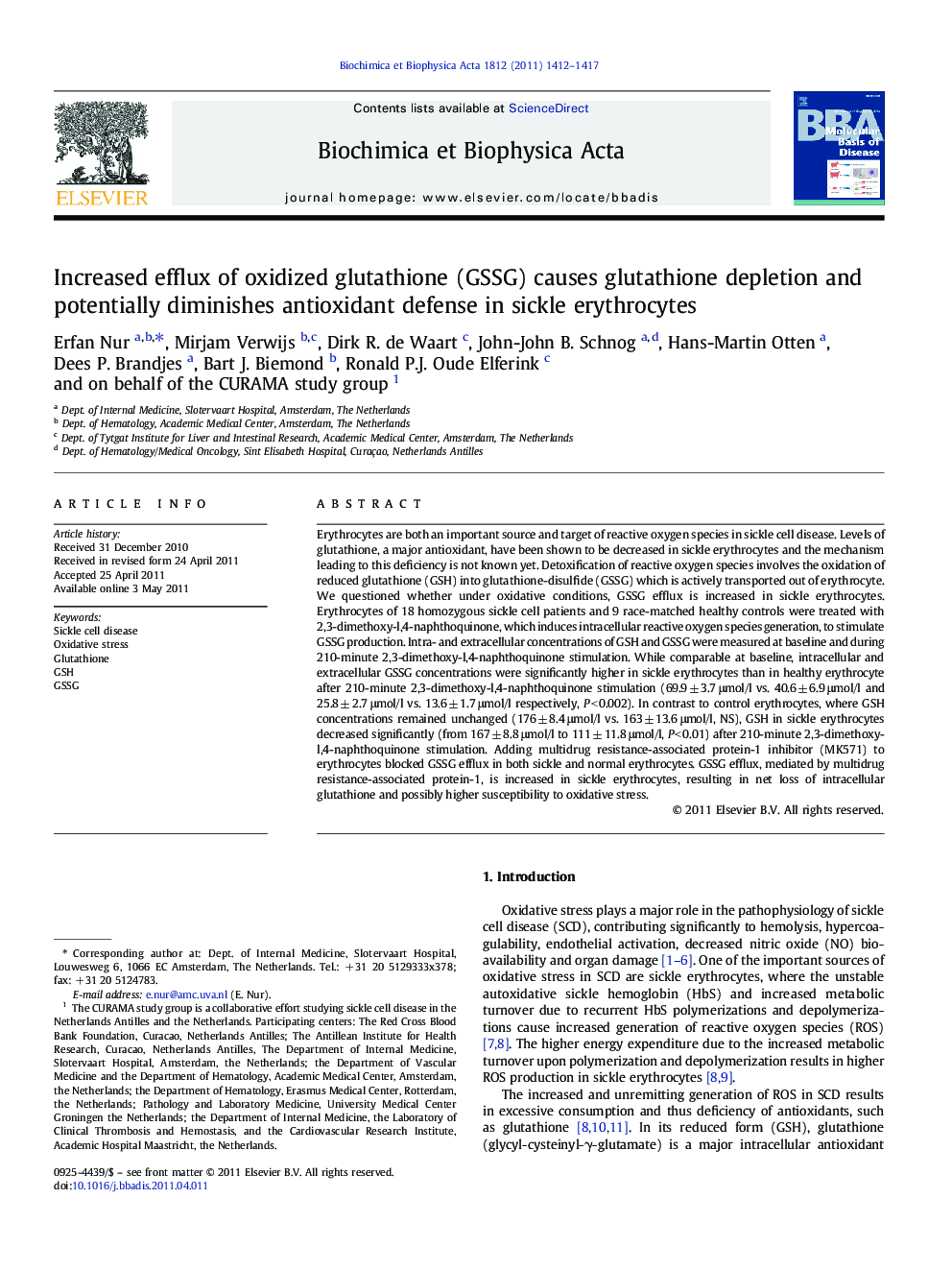| Article ID | Journal | Published Year | Pages | File Type |
|---|---|---|---|---|
| 1905112 | Biochimica et Biophysica Acta (BBA) - Molecular Basis of Disease | 2011 | 6 Pages |
Erythrocytes are both an important source and target of reactive oxygen species in sickle cell disease. Levels of glutathione, a major antioxidant, have been shown to be decreased in sickle erythrocytes and the mechanism leading to this deficiency is not known yet. Detoxification of reactive oxygen species involves the oxidation of reduced glutathione (GSH) into glutathione-disulfide (GSSG) which is actively transported out of erythrocyte. We questioned whether under oxidative conditions, GSSG efflux is increased in sickle erythrocytes. Erythrocytes of 18 homozygous sickle cell patients and 9 race-matched healthy controls were treated with 2,3-dimethoxy-l,4-naphthoquinone, which induces intracellular reactive oxygen species generation, to stimulate GSSG production. Intra- and extracellular concentrations of GSH and GSSG were measured at baseline and during 210-minute 2,3-dimethoxy-l,4-naphthoquinone stimulation. While comparable at baseline, intracellular and extracellular GSSG concentrations were significantly higher in sickle erythrocytes than in healthy erythrocyte after 210-minute 2,3-dimethoxy-l,4-naphthoquinone stimulation (69.9 ± 3.7 μmol/l vs. 40.6 ± 6.9 μmol/l and 25.8 ± 2.7 μmol/l vs. 13.6 ± 1.7 μmol/l respectively, P < 0.002). In contrast to control erythrocytes, where GSH concentrations remained unchanged (176 ± 8.4 μmol/l vs. 163 ± 13.6 μmol/l, NS), GSH in sickle erythrocytes decreased significantly (from 167 ± 8.8 μmol/l to 111 ± 11.8 μmol/l, P < 0.01) after 210-minute 2,3-dimethoxy-l,4-naphthoquinone stimulation. Adding multidrug resistance-associated protein-1 inhibitor (MK571) to erythrocytes blocked GSSG efflux in both sickle and normal erythrocytes. GSSG efflux, mediated by multidrug resistance-associated protein-1, is increased in sickle erythrocytes, resulting in net loss of intracellular glutathione and possibly higher susceptibility to oxidative stress.
Research highlights► Sickle cell disease characterized by increased oxidative stress and poor antioxidant capacity. ► Decreased intracellular GSH levels in sickle erythrocytes. ► GSSG efflux increased in sickle erythrocytes, causing net loss of GSH. ► Increased GSSG efflux mediated by MRP1 transporters.
